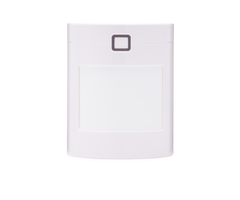How Does a Pet-Immune Motion Detector Work?
A pet-immune motion detector works by scanning for motion in such a way that it is not activated by a small animal passing by the sensor. However, the motion will still need to be able to detect the motion of a human intruder. Many motions feature a pet-immune setting for this purpose.
With a pet-immune motion detector, mounting height and angle is very important. The goal is to set up the sensor so that it will see a human walking upright, but not a small animal moving close to the ground. To achieve this type of setup, it is advised that pet-immune motion detectors be installed at a height between 7.5 and 8 feet high. A Pet-immune motion sensor should also not be installed facing a stairway that pets could climb and use to get within the field of view of the sensor.
It may also be a good idea to reduce the sensitivity of any motion detector that is going to be used with pets. This can be done by increasing the pulse count for the sensor. A higher pulse count means that motion will need to be detected across a larger area for the sensor to activate. A pet or small animal will be less likely to set off a motion sensor if its pulse count is higher. Additionally, swapping out the lens for the sensor may also be beneficial. Many motion sensors have pet-immune lenses that can be used.
There are important things to remember with pet-immune motion detectors. First, the listed weight is merely an estimate. If a motion sensor is listed as pet-immune for up to 40 pounds, it assumes that animals weighing 40 pounds or less will be of a certain size that will prevent them from setting off the device when it has been mounted properly. Just because a pet is within this limit does not mean that it will be impossible for them to activate the motion detector.
Additionally, a pet will still be able to activate a pet-immune motion detector if it is able to get directly in front of the motion sensor. The principle behind a pet-immune motion sensor is that a pet will be able to walk freely underneath its detecting signal. But if the pet is able to get higher up, perhaps by climbing furniture or jumping, then it is possible that it could get within the range of the motion sensor. If that happens, a pet may be able to activate the motion sensor.
Did you find this answer useful?
We offer alarm monitoring as low as $10 / month
Click Here to Learn MoreRelated Products





Related Categories
- Answered


